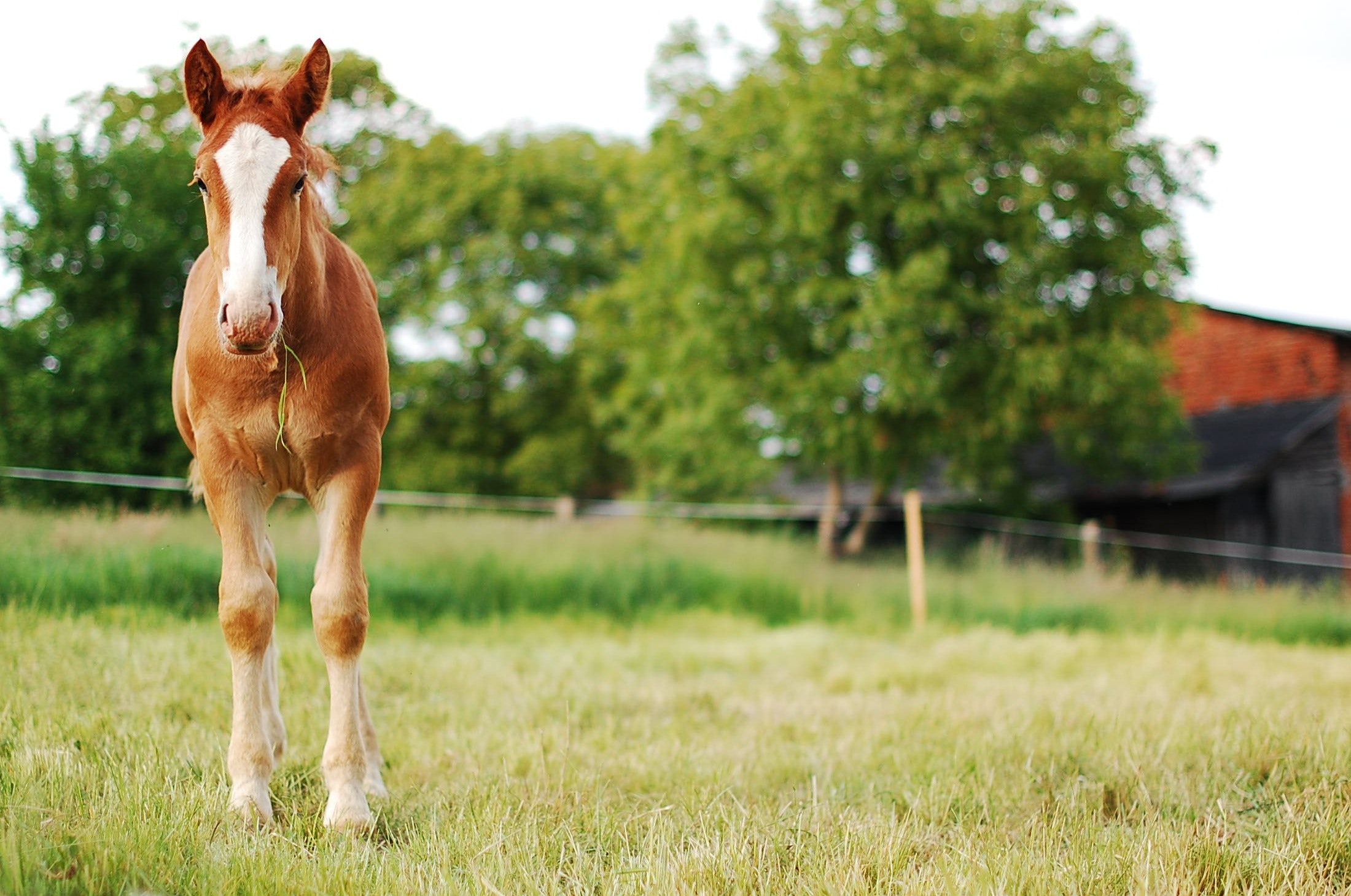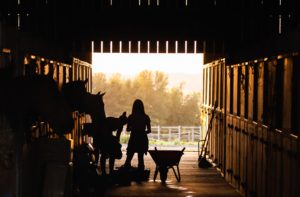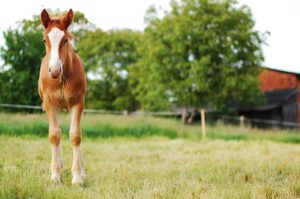
15 Mar 2022 Everything You Need to Know About Spring Grass
Excited about spring being around the corner? So are we! But beware, as safe as it may seem, spring grass can cause serious harm.
Here are a few things you should know so you can start turning your horse out safely this spring:
Not All Spring Grasses Are Created Equal!
Pasture turnout is a cornerstone of equine diets and offers excellent nutrition for the body. It contains fiber to keep the digestive tract healthy and to support a healthy micro-biome in the hind gut. Plenty of omega-3 fatty acids to put back the weight on after a winter of cold and often little turnout. It also allows the horse to satisfy his innate need to graze and to socialize if turned out with a friend.
However, not all pasture is created equal. Spring grasses are capable of accumulating high amounts of NSC’s (Non Structural Carbohydrates) such as sugars, fructans and starches. Especially for horses with digestive or metabolic disorders, they can be bad news.
The NSC content of grass can vary widely depending on environmental conditions, plant species and stage of growth. In other words, how lush is the spring grass? How much sun and rain did it get so far? How short or tall is it? What temperatures have allowed which kind to grow so far? How many weeds are present in the pasture? Has it been overseeded in the fall and with what seed?
Cool vs. Warm Season Grasses
There are 2 main groups of grasses: cool season grass and warm season grass. This is partially based on their growing cycle throughout the year, but also on how the grass metabolizes and photosynthesizes sunlight to produce the carbohydrates.
Fructans are the primary carbohydrate in “cool season grasses,” such as fescue, orchard grass and timothy. In legumes (such as clover and alfalfa) and “warm season grasses,” (such as Bermuda, crabgrass and bahia or coastal grass) it will be primarily starches.
Cool weather grasses can accumulate higher amounts of carbohydrates because of their storage system compared to warm weather grasses.
Why is NSC a problem?
Photosynthesis happens during the daylight hours to produce NSC’s (Non Structural Carbohydrates) which fuel the plant to grow during the night. NSC levels tend to increase during the day and peak in the late afternoon and then decrease overnight to the lowest levels early in the morning before dawn. In the spring, the nights are still cool, and if the temperature is below 40F, the NSC’s cannot be used for growth but accumulate in the plant instead, so the levels do not go down overnight.
Furthermore, environmental conditions such as drought conditions, frost, soil fertility and moisture all play a role in the use of the NSC’s for plant growth and thus in the accumulation or lack thereof of NSC’s in the plant.
If a horse suddenly ingests large amounts of these sugars and starches, while fiber content is still low (not enough stem to the grass, still too short), it can wreak havoc in the digestive system and metabolism.
NSC’s will be converted to simple sugars, which will trigger the body to release insulin for removing the sugars from the bloodstream. Fluctuations in blood glucose and insulin levels can contribute to insulin resistance and also could directly cause laminitis.
Large amounts of sugars also can disrupt the digestive tract’s ability to digest the NSC’s and cause a disruption of the normal fermentation which takes place in the hind gut. (this would be similar to grain overload) If fructans reach the hindgut, they can cause a pH drop and a chain reaction that also may result in laminitis.

So What Do I Need to Do?
Owners can reduce the risks of potential laminitis by:
1 – Introducing horses back to grass very gradually. Starting with hand grazing for 20-30 minutes per day in the early morning hours and increasing that time very gradually (30 min increments every 3-4 days)
2 – Horses who have been on grass during the winter months, will be able to adjust naturally to the changing grass composition and quantity. However, monitoring is still advised
3 – Using a grazing muzzle can considerably reduce the amount a horse can ingest and slow them down substantially
4 – Monitor the temperatures and rainfall and adjust accordingly what the duration or time of day you decide to turn out
5 – Have a dry lot constructed so the horse still has time outside of the stall, with access to hay instead of grass as a form of forage
6 – Horses with known previous or current issues should have lateral radiographs done twice a year to track any potential rotation of the coffin bone before lameness or pain occurs
Best Practices
Be especially vigilant when nights are cool, as the growing grass on those days was not able to convert the sugars into growth, but rather store the sugars and accumulate higher concentrations the following day.
Another important piece of information is that horses who have not been able to be on pasture and are introduced with limited time on pasture compared to horses who were on grass continually, are capable to consume at a much higher rate and therefore can have a much higher NSC intake than their continuously grazing friends.
It is further important to note that spring grass will store fructans in the stem closer to the ground. If the pasture does not stay in a vegetative (growing) state, in which the plant uses the NSC’s for growth, but is eaten down too low, the NSC levels again will go up and potentially cause issues.
Ideally the pasture should remain at about 5-7 inches of length at all times, not just for spring grass, and rotation of pasture is recommended when length decreases below 4 inches.
Overseeding with warm season or low-NSC cool season grasses can also reduce the risk of NSC overconsumption.
Contact Form
